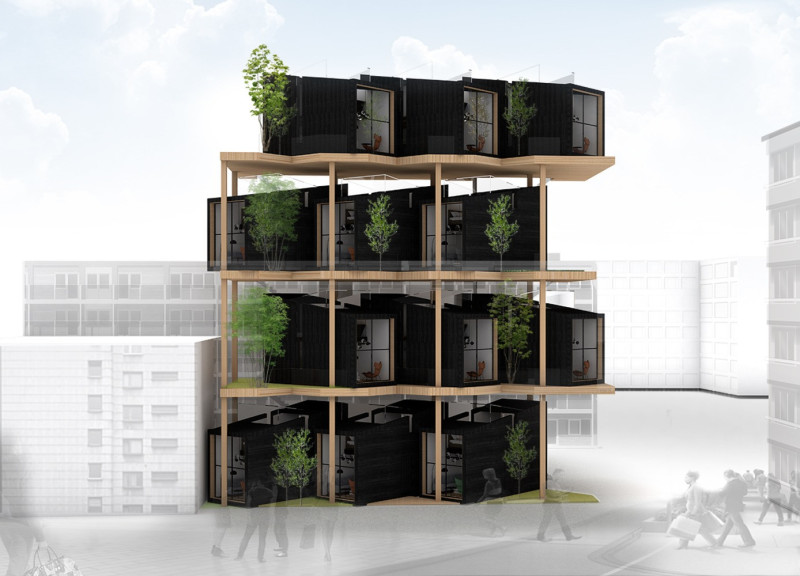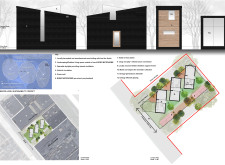5 key facts about this project
The BoBo Microhome, also known as the Boston Bothy, responds to the increasing need for affordable living spaces in urban areas. Located in Boston, it focuses on modular design and prefabrication, creating a compact solution for modern city life. With its emphasis on flexibility and sustainability, the project meets the aspirations of urban professionals looking to own a home in a busy environment.
Design Concept
The design features stackable modular units that efficiently use limited urban space. With a compact size of 268 square feet, the layout maximizes vertical space, allowing for various configurations based on demand. A timber skeleton supports the prefabricated structure, enabling adaptability while ensuring stability and durability.
Sustainability Features
Sustainability is an important aspect of the BoBo Microhome. The design reduces construction waste by utilizing prefabrication techniques, which contrasts with traditional building methods that often generate more waste. Energy-generating sidewalks adjacent to the microhome capture movement from pedestrians, helping to power the units and promoting the use of renewable energy in a busy city setting.
Materials and Health Considerations
Locally sourced materials are a key feature of the BoBo Microhome. It includes wood siding made with low-VOC finishes. This focus on low-VOC materials benefits indoor air quality and supports local businesses. The wooden frame not only provides structure but also contributes to the visual appeal of the design.
Community Integration
The BoBo Microhome includes green spaces that create a park-like atmosphere among the units. These areas provide room for outdoor activities and encourage social connections among residents. Such spaces help lessen the feeling of congestion in urban living, offering a refreshing experience outside. The design aims to balance social interaction with personal space, fostering a sense of community.
An operable skylight is incorporated into each unit, allowing for natural light and ventilation. This feature enhances the living experience, connecting residents with the outside environment while promoting a comfortable atmosphere indoors.






















































